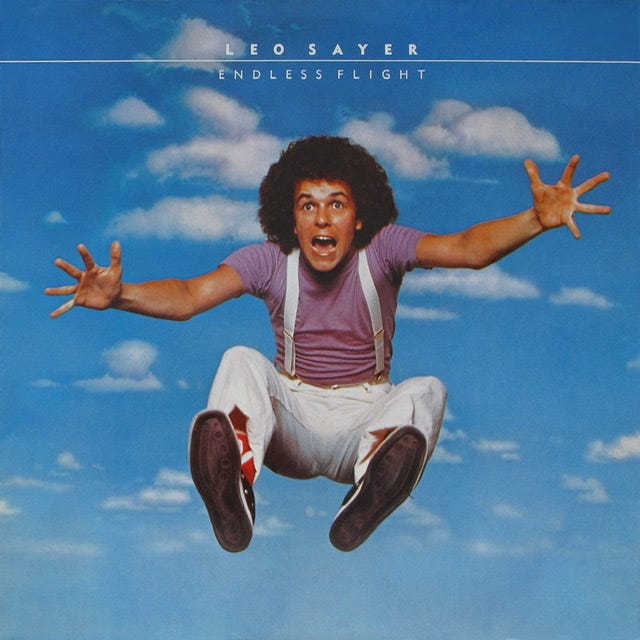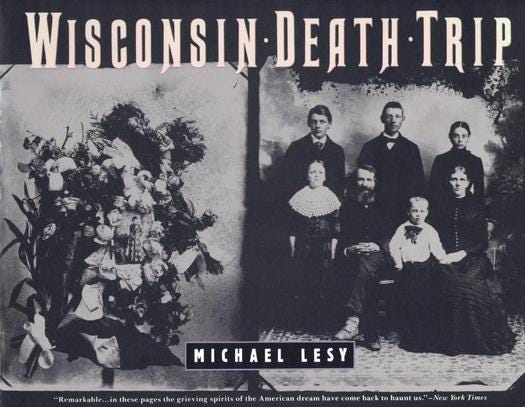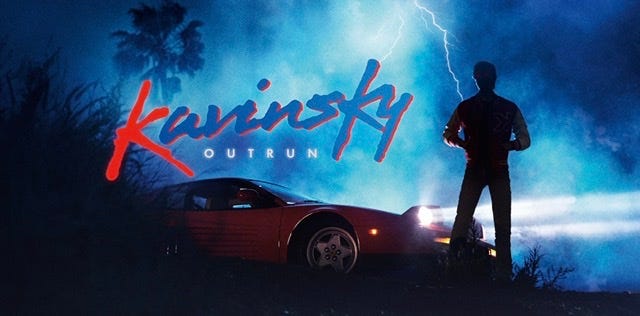Plucking Around for the week of April 11th 2022
Qatsis, Fievels, Death Trips, and Little Princes
One of the benefits of limiting my Twitter usage is not knowing what the hell is going on.
I mean, I read the news. Local and NPR. So I know what is actually going on, but I am mostly immune to The Discourse1, which in the immortal, falsetto words of Leo Sayer, makes me feel like dancing. I reserve the right to don white suspenders and Chucks and leap into the air. Trust me, if I can do so without breaking my coccyx, I will recreate this album cover someday:
Instead of dancing, I’ve been gallivanting throughout the Pinelands! I’ve been to a midden used by the Lenni-Lenape beginning at least fifteen hundred years ago, and abandoned charcoal furnace and bog iron forge on deeply rutted back roads. It was a joy. This weekend, I think I’m going to follow the old Tuckerton stagecoach road from Atsion to Little Egg Harbor, and see if the Apple Pie Hill fire tower is manned, so I can climb up for a view. This time I’ll make sure to blast Leo Sayer for luck.
What else did I do this week? You know what I’ve been reading. I also watched Don Bluth’s An American Tail, after falling in love with The Secret of NIMH again—and well, it’s probably the best animated allegory for the American immigrant experience in the 1800’s that I can think of. Rats and cats fill in for Tammany Hall and the Five Points gangs, but otherwise it’s kind of like Martin Scorsese’s Gangs of New York with the Giant Mouse of Minsk instead of Bill the Butcher.
I also watched all three films by Godfrey Reggio with music by Philip Glass, known as “the Qatsi Trilogy,” the most famous (and best) being Koyaanisqatsi. That’s a Hopi word meaning “life out of balance,” and if you haven’t seen it, is like an extended music video of the destruction caused by modern industrial civilization. Many of the film techniques were co-opted by TV commercials, so it loses some of its impact, but it is still powerful. The other two films, Powaqqatsi and Naqoyqatsi, are less evocative and feel extremely dated. Powaqqatsi focuses on the developing world, and while the photography is still stunning, it feels almost exploitive. The final film was meant to convey the “digitalization” of humanity and uses negatives and computer-generated imagery to … little effect. It comes off like The Lawnmower Man. And the music in the second and third films is completely unlike the somber chants of the original, and utterly unmemorable.
What was quite memorable was Wisconsin Death Trip, a documentary based on a 1967 book of photographs and recollections of the tragedies that befell a Wisconsin town in the early 1900s. Recommended to me by Kim Parkhurst, she compared it to Koyaanisqatsi in its combination of visuals and music, and it certainly is the “qatsi” for us fans of morbid Americana. You can watch all 78 minutes of it at the link above, black and white reenactments of small-town violence and human frailty, narrated by Ian Holm and set to music. The book was apparently a counter-culture sensation for a time, and I may have to hunt down a copy.
Especially since I am traveling to Wisconsin soon. For business; I won’t have time to visit my favorite spot on the Great Lakes, Madeleine Island, on Lake Superior, or to go looking for The Beast of Bray road, or other dogmen said to hunt and haunt the eerie plains of the Cheesehead State. But I will be in Madison, checking out local bookstores and historic sites, including the many Indian Mounds preserved around the city. (I will also be consuming an ungodly amount of squeaky fried cheese curds. There will be much rejoicing.)
The latest addition to my vinyl collection are two albums by Kavinsky, best known as the originator of the “outrun” genre, with the ‘80s Testarossa fantasy concept album of the same name. If you want to travel to 1983 and pretend you’re locked in a neo-noir action movie inspired by the video game Spy Hunter, the TV shows “Knight Rider,” and “Miami Vice,” just put this album on for a listen. “Nightcall” was famously used in Nicholas Winding Refn’s adaptation of the James Sallis neo-noir novel, Drive, one of my favorite films (and soundtracks). That’s how I found Kavinsky, and his newest album, Reborn, is more mature and creative, and also highly recommended.
I also re-read The Little Prince, by Antoine de Saint-Exupéry. (How I love typing that name. Nearly as much as typing Koyaanisqatsi.) I don’t read too much into it, but I enjoy the story of the pilot who can’t stand adults, and the boy from another tiny planet and his love of a vain rose. If you’re a fighter pilot and explorer, you understand bad romance. What you love is liable to kill you. I’m not sure I embrace his philosophy but he does make you think, like the fox, about being tamed, and the snake, who knows their only gift is eternal darkness.
Why did I read it again? Because Catherine Raven talks about it a lot in Fox & I, and I hadn’t read it in a long time. I found a copy at Second Time Books with his color illustrations, not a first edition, but from 1948. A mere 5 years after his death. He was a pilot, like Emilio Carranza (if you don’t know about the “Mexican Lindbergh” you’ll find out on Sunday, when I write about visiting the monument to him in the Pine Barrens). Unlike Lindbergh, Carranza was never a fascist, so I will hereby refer to Lindy as “the American Carranza.” de Saint-Exupéry fought against the Nazis, so maybe they should be referred to as the American and Mexican de Saint-Exupérys, or “Exupes” for short. Twitterer @classicmovieblg send me a paperback of Wind, Sand, and Stars, the adventure memoir by de Saint-Exupéry, and I look forward to reading it next.
Some further reading:
The Jersey Devil: The Real Story, by Brian Regal, PhD. More fascinating than the ridiculous legend, it involves Ben Franklin, rogue Quakers, and a battle of almanacs.
This one may infuriate you. Killing Wolves to Own the Libs? The American frontier cosplay of defining your personality as who you are not—chardonnay sipping, avocado toast eating liberals—is killing us. And hundreds of gray wolves. And doing anything about it only fans the flames. So they’re doing nothing. Chris La Tray wrote about this more eloquently than I can at this moment.
I also greatly enjoyed this tribute to Dolly Parton by Lauren Hough, and this tribute to a cat named Cherie by Joyce Carol Oates.
Happy holidays if you celebrate.
Hail Ashtoreth,
TP
What is The Discourse? The latest thing that has Twitter in an uproar. (Like Elongated Muskrat threatening to buy Twitter. Or the calculated offensive thing some up and coming politician said, to get a bunch of outrage tweets, and donations.)








I ventured out to Bray Road once when I was working in Milwaukee. My band has a song called "The Beast of Bray Road" on our first record, and when you open the CD jacket the facing photograph is of Bray Road. I went stomping around looking for signs of Bigfoot with Linda Godfrey (who wrote the BoBR book) on another trip. I love that area!
The biggest disappointment that first trip was that I wound up in Lake Geneva, home of the late, great Gary Gygax, and learned there's no towering monument to him anywhere.
You probably don’t have time for this, but I just finished reading/commenting here, and was scrolling down my other newsletters and ran across this castle of cheese in Wisconsin with a cow that spouts cheese facts and if that’s not worth a side trip if you have any extra time at all, I don’t know what is: https://www.brokenpalate.com/p/wisconsin-has-a-palace-of-cheese